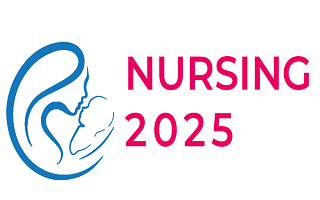Nursing 2025

Nantong University, China
Abstract:
Objective To investigate the effect of epidural labor analgesia on neonatal sucking ability and breastfeeding.Methods This study was a prospective cohort study. Convenience sampling was used to enroll women who delivered in the Affiliated Maternity and Child Health Care Hospital of Nantong University from January 2022 to December 2022. They were divided into epidural analgesia group and non-analgesia group according to whether they received epidural analgesia. The sucking pressure was measured by pressure measuring instrument at 0~24h、>24~48h、>48~72h after birth. During the three periods, and the mean, maximum and minimum pressure of sucking were recorded. The Chinese version of Infant Breastfeeding Assessment Tool (IBAT) was used to evaluate the sucking posture. The breastfeeding status during hospitalization and 1, 4 and 6 months after discharge were recorded and followed up. Two independent sample t-test, Chi-square test or Fisher exact test and generalized estimating equations were used to analyze the data.Results A total of 156 mother-infant pairs were included in the analysis, including 78 pairs in the epidural analgesia group and 78 pairs in the non-analgesia group. After controlling the confounding factors, the mean sucking pressure (kPa) in analgesia group was lower than that in the non-analgesia group at 0~24h、>24~48h and >48~72h after birth [5.14 (3.39~6.52) vs 6.39 (4.95~9.15), 5.07 (3.94~7.38) vs 6.20 (5.08~8.54) and 6.19 (4.64~8.36) vs 6.81 (5.88~8.05), P=0.018]; the maximum pressure in the analgesia group was also lower than that in the non-analgesia group [15.81 (9.74~21.68) vs 16.21 (13.58~24.88)], 13.50 (9.83~16.50) vs 17.62 (14.01~22.40) and 14.66 (10.47~18.71) vs 18.04 (15.33~19.85) P=0.007] ; there were no significant differences in minimum pressure between the two groups [2.73 (1.56~5.40) vs 3.33 (2.49~5.10), 2.34 (1.32~4.05) vs 2.76 (2.23~4.37) and 2.96 (2.16~4.51) vs 2.79 (2.21~3.64), P=0.195]. The IBAT scores of neonates in the analgesia group were lower than those in the non-analgesia group during the first 3 days after delivery [10 (9~10), 10 (9~11) and 10 (10~11) vs 10 (10~11), 11 (10~11) and 11 (11~12), P=0.001]. The rate of early exclusive breastfeeding in the analgesia group was lower than that in the non-analgesia group (67.94%, 41.02% and 38.46% vs 75.64%, 44.87% and 55.12%, P=0.040). There was no significant difference in the exclusive breastfeeding rate between the two groups at 1 month (48.71% vs 53.84%), 4 months (55.12% vs 48.71%) and 6 months (39.74% vs 41.02%) after delivery (all P > 0.05).Conclusions Epidural labor analgesia can lead to the decrease of early neonatal sucking pressure, affect neonatal sucking posture, and reduce the rate of exclusive breastfeeding during the hospital, but has no significant correlation with the rate of exclusive breastfeeding within 6 months after delivery.
Biography:
Chen Zhifang, Master of Obstetrics and Gynecology, Chief Nurse, and Master's Supervisor at Nantong University, has been focusing on obstetrics and gynecology nursing and midwifery care for 30 years. She has completed multiple research projects and published several papers.
